Originally isolated from hypothalamic tissue, somatostatin is characterized as an inhibitor of growth hormone (GH) release.
The structure was determined in 1971. Subsequent investigations led to the recognition that somatostatin also was
released from the pancreas and has a role of inhibiting the secretion of both insulin and glucagon. A total of five
somatostatin receptor subtypes have been characterized and cloned (sst1 to sst5).
Subtype sst4 is associated with the
inhibition of insulin release, and an sst4-selective inhibitor has been reported. The somatostatin analogue SOM230
has exhibited selectivity for sst1, sst2, sst3, and sst5 in rats and effectively decreased plasma GH and insulin-like growth
factor-1 (IGF-1) levels by 75% without significant effects on insulin or glucagon. Another analogue, PT R3173, with
selectivity for recombinant human somatostatin receptor (hsst2, hsst4, hsst5) was substantially more effective in inhibiting
GH secretion compared to glucagon and insulin release in rats.

